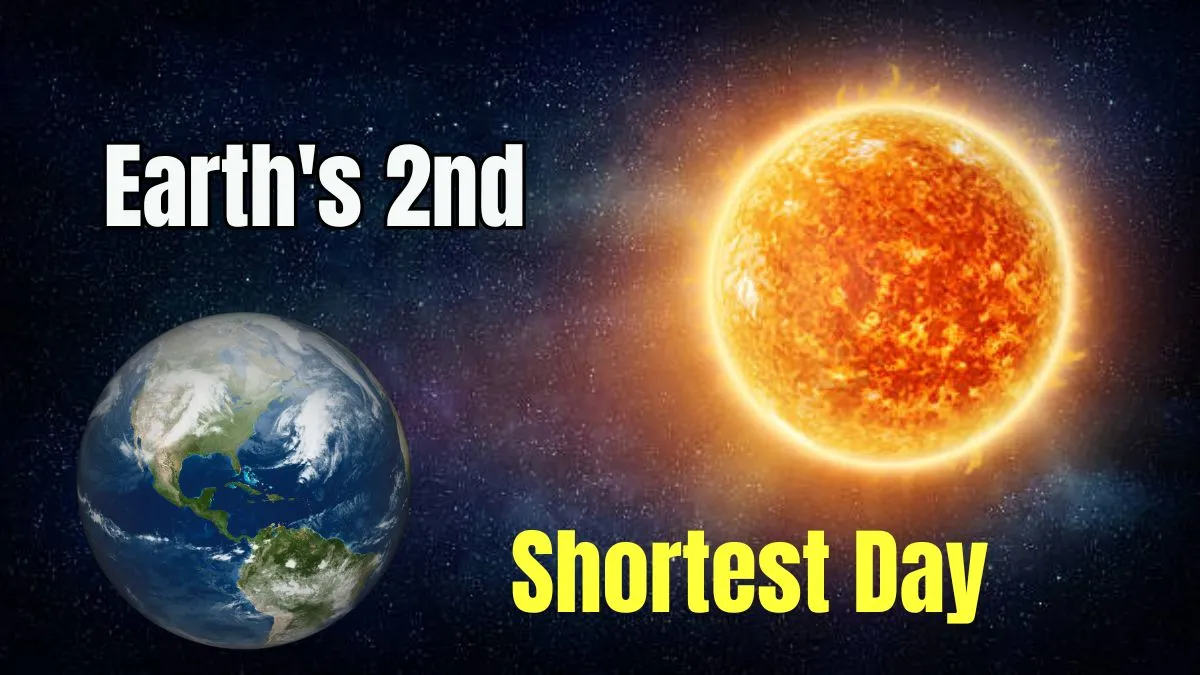A subtle shift in Earth’s rotation has scientists puzzled as the planet completes its daily spin fractionally faster, leading to increasingly shorter days. In an unusual astronomical turn, July 22nd is set to become the second shortest day of the current year.
This phenomenon occurs as the Earth completes its rotation around its axis approximately 1.34 milliseconds faster than the usual 24-hour cycle. While this minuscule difference is imperceptible to most, it signals an accelerating trend in Earth’s rotation that has perplexed scientists.
Understanding Earth’s Day-Night Cycle:
Traditionally, an Earth day is defined by the planet’s complete rotation, which takes 24 hours, or precisely 86,400 seconds. However, this has not always been the case.
Research published in the journal Nature Geoscience in 2023 revealed that billions of years ago, an Earth day lasted only 19 hours. The study indicated that two billion years ago, the day was five hours shorter than it is today, primarily because the Moon was significantly closer to Earth.
As the Moon gradually receded, Earth’s rotational speed slowed, consequently lengthening the day.
Recent Decades: A Surprising Turn
A remarkable shift has been observed in recent decades. Since 1973, atomic clocks have meticulously tracked Earth’s rotation, revealing that days often exceed 24 hours by a small margin. Before 2020, the shortest recorded day was 1.05 milliseconds less than 24 hours. However, since 2020, Earth has been spinning faster, consistently setting new records for shorter days.
The absolute shortest day on record occurred on July 5, 2024, when Earth completed its rotation 1.66 milliseconds ahead of the 24-hour mark. Similarly, July 9th of this year also saw a day that was 1.36 milliseconds shorter.
Scientists anticipate that on July 22nd, Earth will complete its rotation 1.34 milliseconds early, followed by another shorter day on August 5th, which will be 1.25 milliseconds less. This makes July 22nd the second shortest day recorded this year to date.
Potential ramifications and the ‘Negative Leap Second:
This accelerated rotation carries various implications. If the Earth’s speeding trend persists, there’s a possibility that a second might need to be subtracted from atomic clocks in 2029. This unprecedented adjustment, termed a “negative leap second,” would mark a historic first.
The exact reasons behind this acceleration remain unclear. One prevailing theory suggests that the melting of polar ice caps and rising sea levels might contribute to this phenomenon. Adding to the mystery, the three shortest days of this year are occurring when the Moon is at its farthest point from Earth.
This puzzles scientists, as a more distant Moon typically correlates with a slower Earth rotation, not a faster one. While earthquakes can also influence Earth’s rotational speed, no major seismic activity has occurred this year that would account for the current acceleration, leading experts to rule out this factor.
The significance of earth’s rotational speed:
The accelerated rotation of Earth has direct consequences for atomic clocks, which are crucial for GPS satellites. If this increased speed continues, GPS satellites could become obsolete more quickly.
Furthermore, the effects of Earth’s rotation on time could impact smartphones, computers, and communication systems that rely on Network Time Protocol servers.
This is precisely why scientists are considering the implementation of a negative leap second, though such a measure would not be enacted before 2029.



















